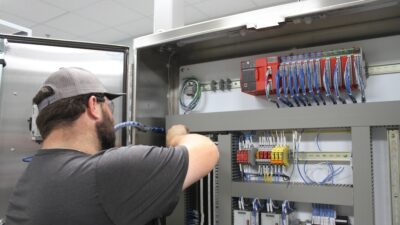For years, process design engineers have dreamed of the ultimate control system development toolset. One that uses the same toolset to develop specifications and test plans, design and develop piping and instrument diagrams (P&IDs), and then with a click of a button, automatically turns all that information into control code and graphics for any control system.
For years, process design engineers have dreamed of the ultimate control system development toolset. One that uses the same toolset to develop specifications and test plans, design and develop piping and instrument diagrams (P&IDs), and then with a click of a button, automatically turns all that information into control code and graphics for any control system.
The ‘ultimate’ toolset may be unachievable, but Spec-Soft (Tel-Aviv, Israel) is getting closer to it.
In June 1999, Control Engineering reported on Spec-Soft’s Process Functional Specification (PFS) software. Since that 1999 review, Spec-Soft not only enhanced recipe development and management, but PFS’ 2001 release also provides:
Change management features that track adds, deletes, renames and moves made in P&IDs, time-stamps changes, and highlights and evaluates change impact on the specification;
Rule-based conflict and interaction evaluation procedures aimed at identifying production- and safety-related problems and/or bottlenecks;
Textual, tabular, and graphically customizable specification documentation;
Specification review and simulation; and
Database interfaces to spreadsheets, instrument indexes, batch-engines, human-machine interfaces, and manufacturing execution systems.
Spec-Soft’s 2002 product enhancement adds the automatic generation of controller code from within PFS.
Generating code
Computer aided software engineering (CASE) provides a design-to-implementation software development environment. Most previous CASE implementations use one tool-set for design and specification, another for detailed engineering and simulation, and a third for implementation and testing. Moving information from toolset to toolset is usually a one-way process, achieved using database import/export techniques. The biggest drawback to this approach is that minor changes take only a few minutes to implement in the controller, but take hours to implement in the upstream entities of design, specification and simulation. The result is minor changes are rarely reflected in upstream documentation once implementation occurs.
Spec-Soft’s PFS software hasn’t reached the ultimate CASE environment, but PFS has achieved a significant first step. It develops structured text in accordance with IEC 61131-3.
Why not IEC function blocks?
Spec-Soft’s president, Shaul Shaked, says that, ‘Despite the existence of the IEC 61131-3 standard for programmable logic controller languages, not all controller manufacturers have implemented IEC function blocks the same way. However, most manufacturers support IEC’s instruction list. That’s why we chose to start with instruction list; we wanted early releases of PFS’ code generator to be compatible with as many controller manufacturers’ products as possible.’
Spec-Soft is targeting March 2002 for the next release of PFS with its first-generation code generator capabilities, but the firm acknowledges that PFS eventually needs to produce function block controller implementations.
‘It’s going to take our engineers more time and effort to identify function-block variations, and develop and test compatible automatic code generation tools. However, we are committed to producing function block implementations,’ stated Mr. Shaked.
PFS has a ways to go to become the ultimate CASE tool for process control applications, but if Spec-Soft makes as much progress enhancing PFS during the next 18 months as it made in the previous 18 months, the company just might achieve what no one else has.
This article on Spec-Soft’s Process Functional Specification (PFS) software follows the release of its 2001 version, and updates a previous review ‘Capture process control needs to create functional specification,’ Software Review, Control Engineering, June ’99, p. 88.
For more information, visit www.controleng.com or www.specsoft-pfs.com .
Author Information
Dave Harrold, senior editor, [email protected]



